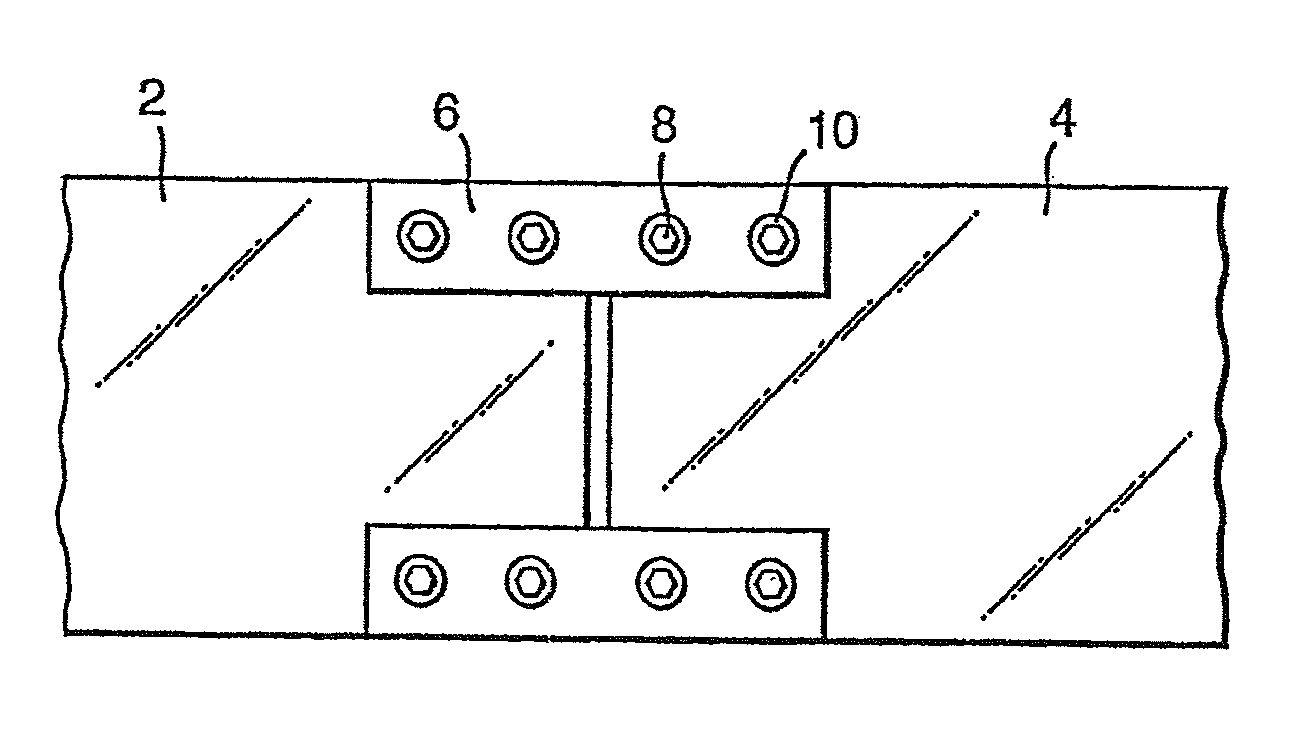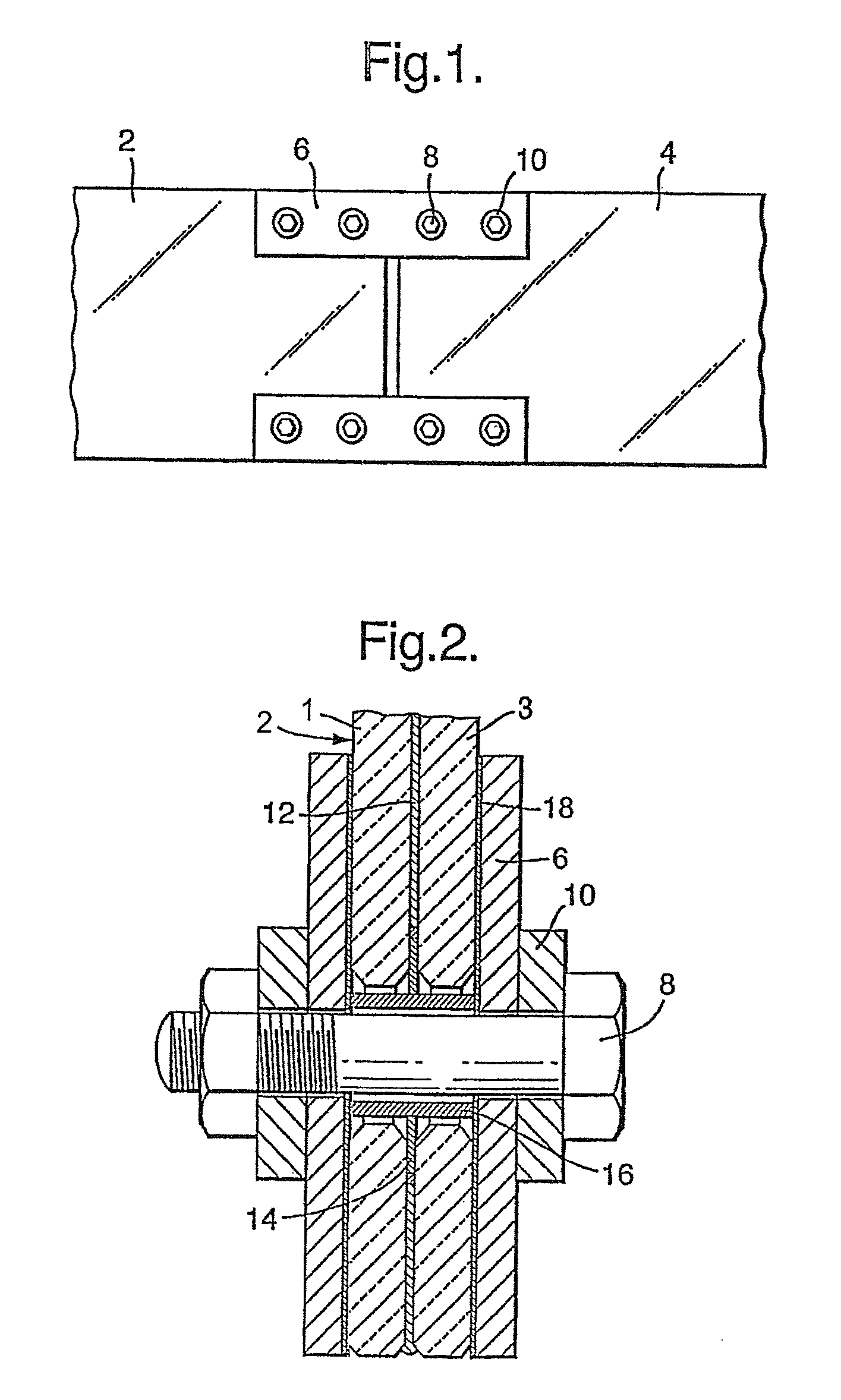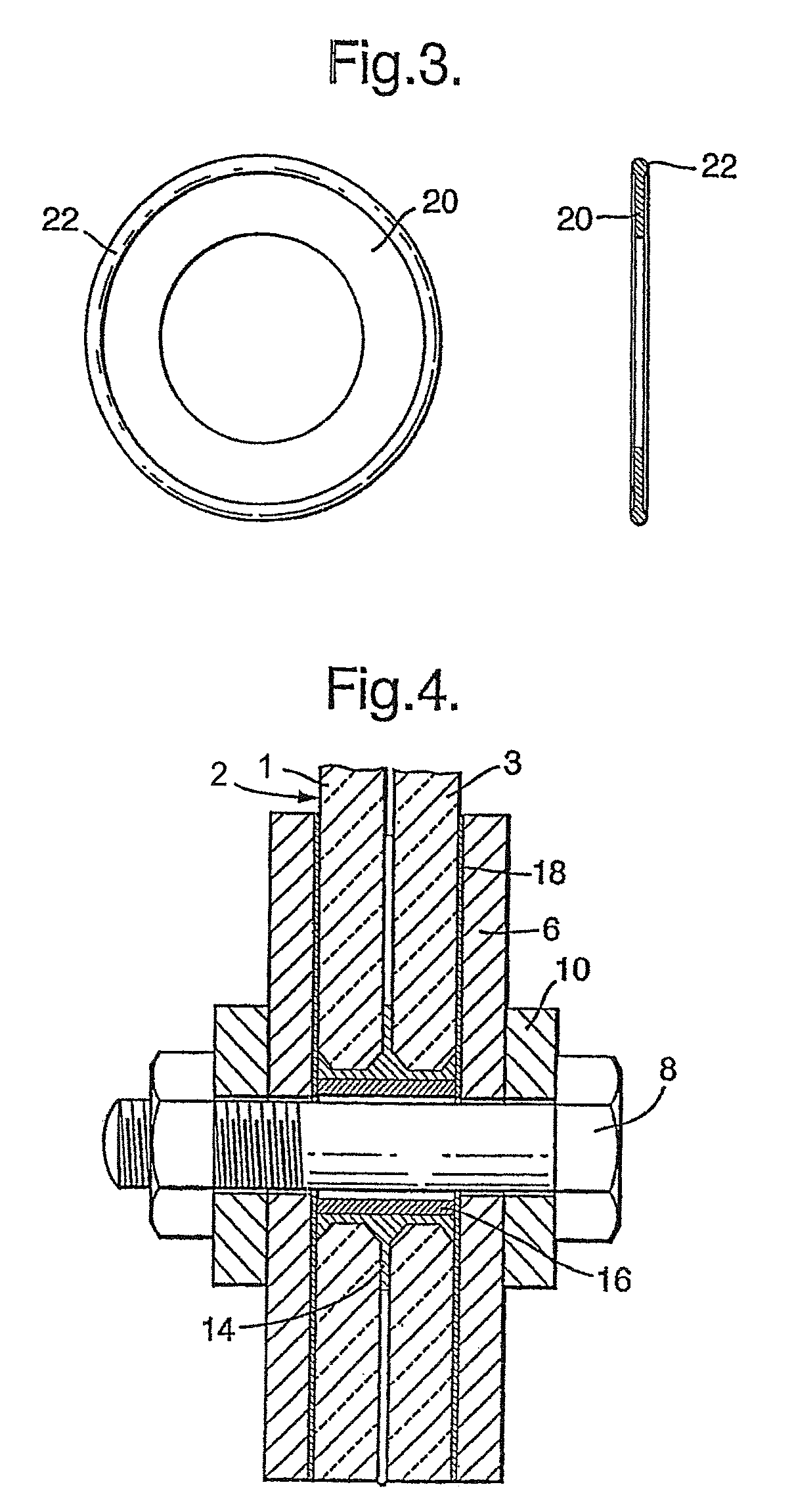Load bearing laminates
a load-bearing laminate and load-bearing technology, which is applied in the direction of layered products, special door/window arrangements, chemistry apparatus and processes, etc., can solve the problems of unsatisfactory jointing techniques which place a load on the laminate, unfavorable application, and difficult to implement. , to achieve the effect of significantly reducing or eliminating the problem of delamination
- Summary
- Abstract
- Description
- Claims
- Application Information
AI Technical Summary
Benefits of technology
Problems solved by technology
Method used
Image
Examples
Embodiment Construction
[0025]FIG. 1 shows two separate laminated panels 2 and 4 which are connected by splice plates 6. Bolt assemblies 8 include washers 10 and pass through plate 6 and one of the panels 2 or 4. The Figure shows eight bolt heads 8 and washers 10 but for clarity only one is identified by these reference numerals.
[0026]FIG. 2 shows a panel 2 comprising plies1 and 3. Plies 1 and 3 are joined by interlayer 12. Insert 14 lies between plies 1 and 3 and surrounds the bore through which bolt 8 passes. Bush 16 sits in the bore. Plate 6 acts against fibre gasket 18.
[0027]FIG. 3 shows Insert 14. Insert 14 comprises annular disc 20 having a rubber ring 22 extending around its outer circumference.
[0028]FIG. 4 shows panel 2 comprising plies 1 and 3. Insert 14 occupies the space between bush 16 and plies 1 and 3. Other identifying numerals show in FIG. 4 identify the same feature as is described above in relation to FIG. 2 and are not separately described here.
[0029]The assembly of FIG. 2 is constructed...
PUM
| Property | Measurement | Unit |
|---|---|---|
| thickness | aaaaa | aaaaa |
| thickness | aaaaa | aaaaa |
| thickness | aaaaa | aaaaa |
Abstract
Description
Claims
Application Information
 Login to View More
Login to View More - R&D
- Intellectual Property
- Life Sciences
- Materials
- Tech Scout
- Unparalleled Data Quality
- Higher Quality Content
- 60% Fewer Hallucinations
Browse by: Latest US Patents, China's latest patents, Technical Efficacy Thesaurus, Application Domain, Technology Topic, Popular Technical Reports.
© 2025 PatSnap. All rights reserved.Legal|Privacy policy|Modern Slavery Act Transparency Statement|Sitemap|About US| Contact US: help@patsnap.com



